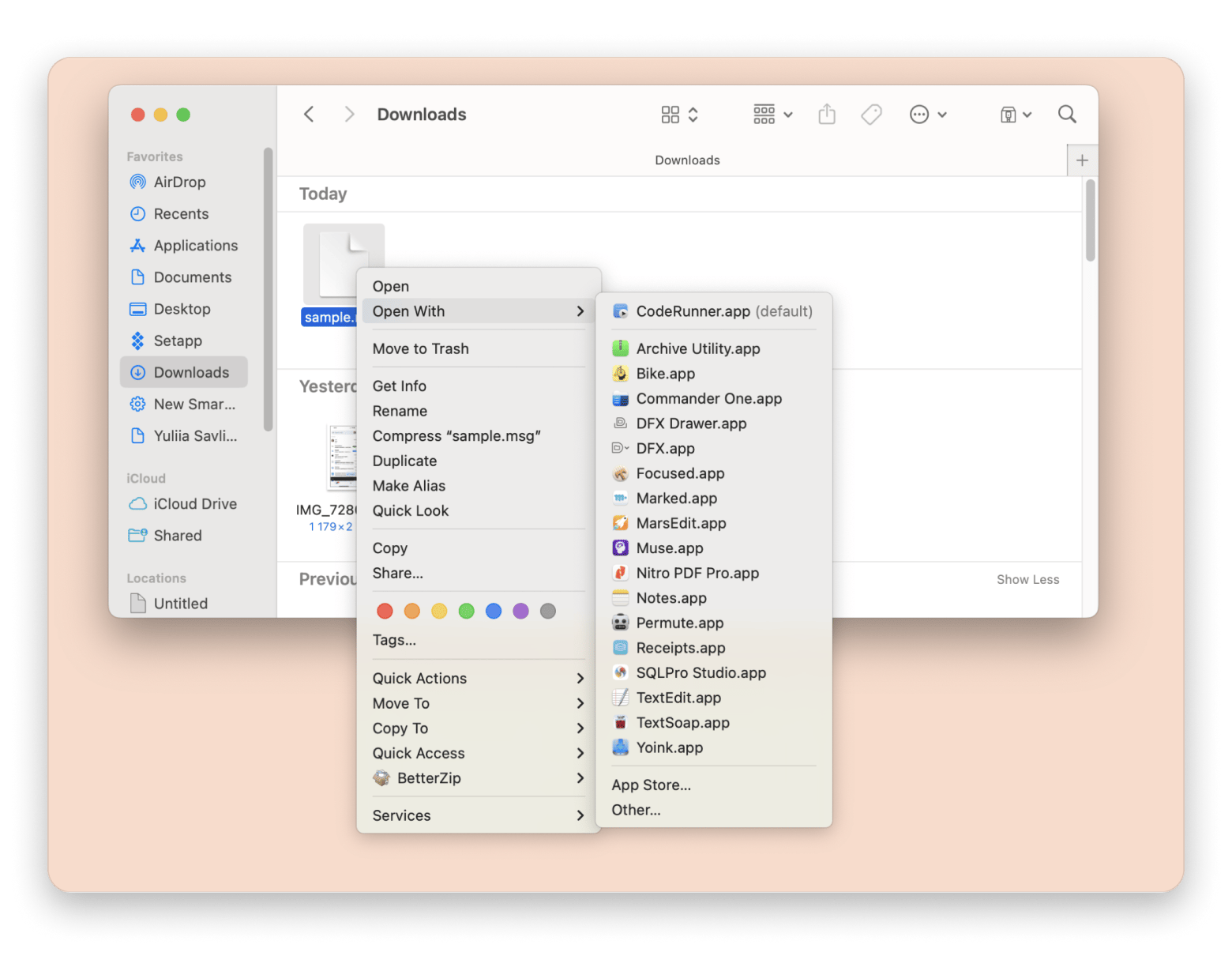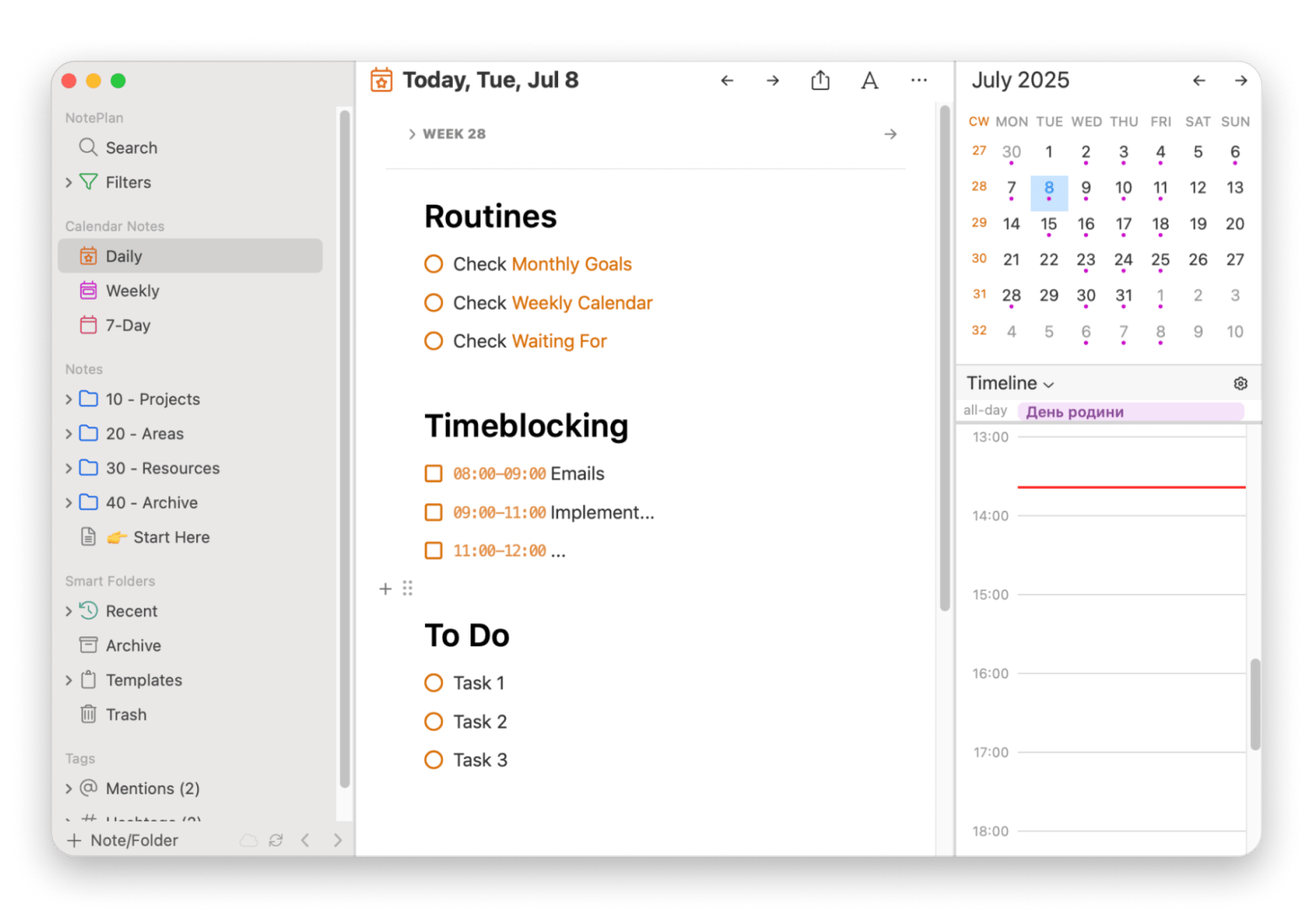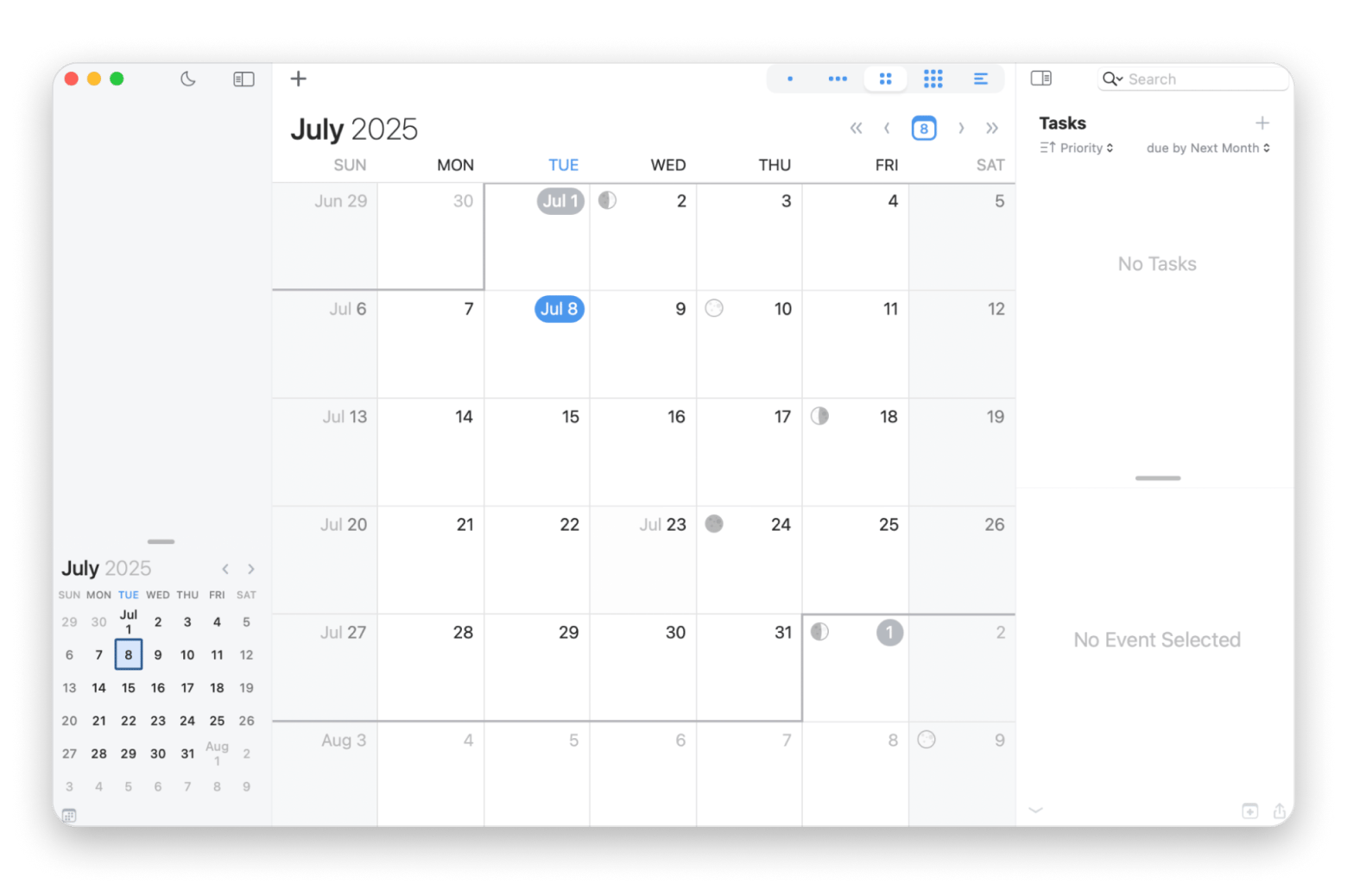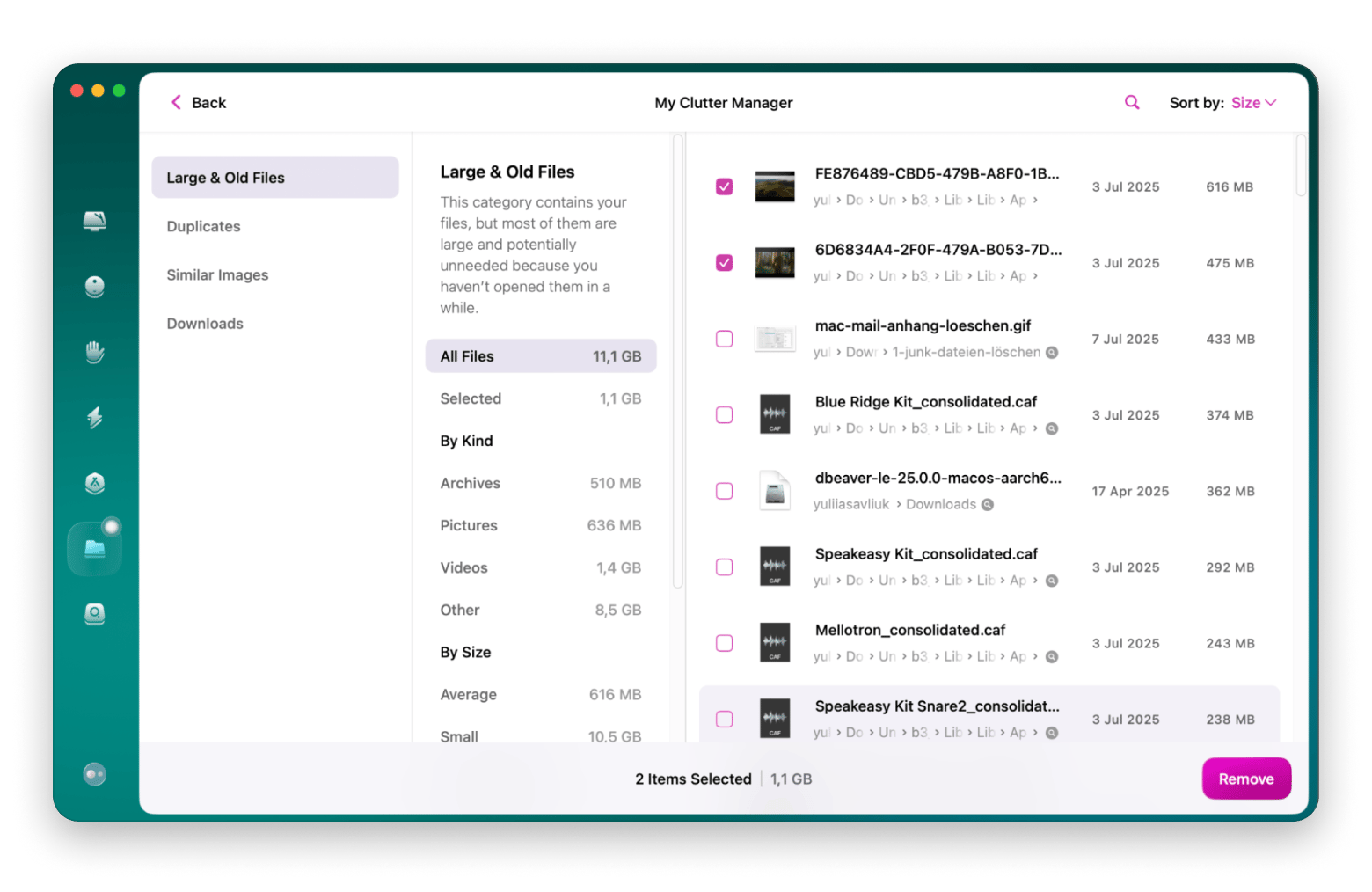How to open Outlook MSG file on Mac: My top solutions
TL;DR:
|
Compatibility between Mac and Windows has come a long way, especially with Microsoft apps like Word, Excel, and PowerPoint. However, Outlook's MSG file format remains a compatibility issue, as it can't be opened on a Mac.
In this article, I’ll show you the different ways to open MSG files on a Mac.
What is an MSG file?
MSG files are Outlook items that store emails, attachments, contacts, calendar events, or tasks. While primarily used by Outlook, some Microsoft programs support these files, but not macOS. Even the Mac version of Outlook can’t open MSG files directly.
The best ways to open Outlook MSG files on Mac
Since Mac Outlook can’t open MSG files, you need a workaround. Let's look at some of the best methods that can help you open MSG files without much hassle.
Method 1: How to open MSG files on Mac using the Outlook Web app
The simplest way is to use Outlook Web as an MSG viewer. Email the MSG file to your outlook.com account, then open the attachment from the web to view the MSG on your Mac.
If you want to make Outlook the default program for opening MSG on Mac, follow these steps:
- Right-click on the MSG file.
- Click Open With > Other.
- Click Always Open With in the dialogue box.
- Select Outlook, then click Open.
In case you don’t have an Outlook account, you can create one for free from the Outlook website.
Method 2: Use SeaMonkey from Mozilla
Besides Outlook, you can use SeaMonkey, an older all-in-one internet suite by Mozilla, to read MSG files on Mac.
Here’s how to open MSG files on Mac using SeaMonkey:
- Install SeaMonkey.
- Go to Window > Mail & Newsgroups from the menu.
- Click Cancel when asked to set up a new account, then click Exit.
- Select File > Open File from the menu.
- Select your MSG file to view its contents.
Method 3: Use the TextEdit app
Though MSG files can contain images and calendars, you can open them on a Mac with a text editor to view the text or check the file’s contents.
To open an Outlook MSG file on a Mac through TextEdit, follow these steps:
- Locate the MSG file in Finder.
- Right-click on the file to bring up the context menu.
- Select Open With > TextEdit.

If TextEdit isn’t listed, choose Other and find it. When opened, some parts may show as gibberish. Just ignore those and scroll to the readable text.
Method 4: Change the MSG file extension
This trick can work in some cases, especially if the MSG file was created by a program other than Outlook. Changing the file extension from .msg to a format that macOS supports allows you to open the file and view its contents.
Here’s how to do it:
- Right-click on the MSG file and select Get Info.
- Expand the Name & Extension option.
- Change .msg to a new extension and press Return.
- Try one of the two extensions below:
- TXT file will open within a text editor like TextEdit.
- EML files will open within Apple Mail or Outlook for Mac.

Method 5: Run Windows on Mac
Running Windows on your Mac is a bit technical, but it's also the most effective long-term way to open MSG files and access other Windows-only apps. The easiest method is using Parallels, a virtualization software that runs Windows on your Mac.
Here’s how to open MSG files on Mac by running Windows through Parallels Desktop:
- Download the Parallels Desktop installer.
- Click the .dmg installation file, then click Install.
- Read through the Software License Agreement and click Accept.
- Enter your local Mac user password to finalize the installation.
Once Parallels Desktop is installed, it'll detect that your Mac has no virtual machines and will automatically offer to download and install Windows 11. All you’ll have to do is confirm by clicking Install Windows.
TipIf you have many large MSG or other files, move them to an external drive to free space. Use CleanMyMac’s Large & Old Files tool (My Clutter > Scan > Review All Files) to find and delete bulky files easily.
|
Bonus tip: Perfect apps for planning, meetings, and managing contacts
Once you’ve mastered opening MSG files on Mac, boost your productivity with helpful apps like:
- NotePlan: A sleek note-taking app with color-coding, markdown, bullet journaling, iOS sync, and reliable backups to keep your notes safe.

- BusyCal: A powerful calendar that acts like a personal assistant, handling scheduling, travel time, custom alerts, and syncing across devices.

- In Your Face: A menu bar app that gathers all your meetings in one place, offers customizable notifications, and lets you join calls instantly without browser redirects.

Alternative tools for opening MSG files on Mac
If you want a quick and easy way to view MSG files, there are a few third-party apps that can help. These tools offer more flexibility than the built-in options on macOS and make it easier to manage your emails:
- Aryson Technologies offers a free app for opening, viewing, and saving MSG data as a PDF. It’s quick to download, and there’s a paid version that costs $29 for a single user.
- SysTools is a dedicated viewer tool for Mac users to open and display MSG files. It’s user-friendly, free to download, and you can upgrade to a single-use paid license for $69.
- MailsDaddy is a free tool for opening, viewing, and analyzing MSG files, including attachments and email properties. A Pro version of the product is available for $39.
How to convert MSG files for macOS compatibility
To open MSG files on a Mac, you can convert them into formats that macOS understands, like MBOX or EML. Tools such as DRS Mac MSG Converter or MacSonik MSG Converter Wizard make this easy.
Once converted, you can import the files into native Mac email apps like Apple Mail without any trouble. Both formats work well and help you access your messages without needing Outlook.
Best practices for managing MSG files on Mac
If you have a lot of MSG files, keeping them organized and safe will make things much easier. Here are a few helpful tips:
- Keep things organized: Try converting your MSG files into MBOX or EML. You can use simple tools and then drag them into Apple Mail or another Mac-friendly app. Or, open an MSG in Outlook and forward it to yourself. You’ll get a neat .eml file in your inbox.
- Archive your messages: In Apple Mail, just select a message and click the Archive button. In Outlook for Mac, pick your emails and hit Archive on the ribbon. That way, you clear your inbox without losing anything.
- Keep backups: Don’t risk losing important emails. Copy your MSG folder to an external drive or an encrypted disk.
- Add extra security: Make your emails as secure as possible with encryption and by storing your MSG files on a secure hard drive or external drive. Third-party mail programs, like Spark Mail and Canary Mail, can help give you an extra layer of security and assurance if you need it.
Why can't Mac Outlook open MSG files?
Mac Outlook can’t open MSG files because they were created for the Windows version of Outlook, which uses a different format. When you try to open an MSG file on a Mac, Outlook doesn't know how to read it, so it just adds it as an attachment instead. That’s why it won’t open like a normal email.
Final thoughts on how to open Outlook MSG file on Mac
It’s now easy to open and read MSG files on your Mac using the tricks above. You can convert files, use web viewers, or even run Windows apps when you need to. With these methods in hand, you’ll never be stuck staring at an unreadable email again.
I also mentioned some great apps to keep your work flowing. NotePlan helps you gather all your notes in one place, BusyCal keeps your schedule in check, and In Your Face brings every meeting right to your menu bar. For email, Spark Mail and Canary Mail both offer smart, secure features, like built-in AI help and advanced encryption. Finally, CleanMyMac gives your Mac a fresh boost.
The good news is that all these apps are available to you right away, along with more than 260 apps on Setapp, a platform of best-in-class macOS and iOS apps created to maximize your efficacy in every field. There's also a free seven-day trial so that you can take the apps for a spin before committing.
FAQ
How to open Outlook data file on Mac?
To open an Outlook data file:
- Open Outlook for Mac.
- Go to the File menu and click Import.
- Select Outlook for Windows archive file (.pst).
- Click Continue.
- Find the .pst file on your computer and select it.
- Click Import.
How do I open an Outlook MSG file?
To open an Outlook MSG file on a Mac, you’ll need to use a workaround, like:
- Forwarding the MSG to an Outlook.com account and viewing it in your browser
- Using a free viewer app to load it directly, converting it into an .eml or .mbox file
- Opening it in Apple Mail, or even running Windows 11 in Parallels Desktop, and opening the message in the full Windows version of Outlook.
How do I convert a .msg to a PDF on Mac?
To convert a .msg to PDF:
- Go to the Mail app on your Mac.
- Click one or more messages or email conversations.
- Click Choose File > Save As.
- Select Export as PDF in the format options.
How to open an .oft file on Mac?
To open an .oft file on Mac, you'll need to use a conversion tool. These tools can convert the .oft file to a compatible format, such as .eml, .msg, or .pst. Once you’ve converted the file, open Outlook for Mac, import the file via the Import option, and follow the instructions.







